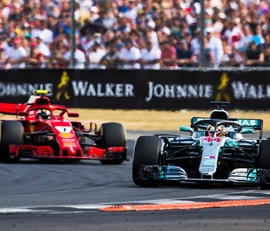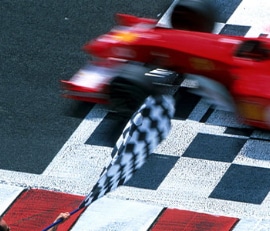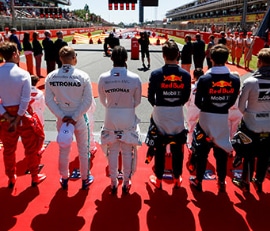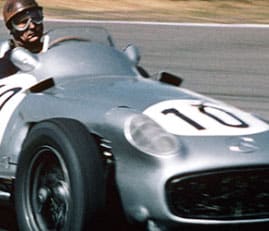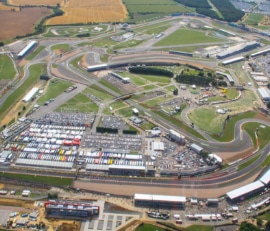This year the Automobile Club de l'Ouest introduced a new feature in the running of the Le Mans 24-hour race by holding a test-day on the circuit as long ago as last April, and at which various competitors were able to try their new cars. At that time the speed of the 3-litre V12 Ferraris was so impressive that it seemed certain that they would win the race, as the only likely opposition was going to come from Aston Martin and they were not quick enough to be taken seriously. Practice during the week before the race rather confirmed this view, for even with Moss at the wheel of the Aston Martin any of the six Ferrari drivers seemed able to cope with him.
After making his usual flashing getaway, Moss led at the end of the opening lap but not by any great margin, and Gendebien and Silva Ramos had him well in sight. Behra had made a very poor start in the third works Ferrari and was catching up fast, so it seemed certain that the Ferrari team could deal with the only fast Aston Martin. The Feltham team had made strict tactics for their three cars, whereas the Ferrari team had been told nothing in the way of race strategy. Moss was given a free hand on the leading Aston to do as he wished, and he was obviously going to try and do another Nurburgring by building up an enormous lead before handing over to Fairman, but with the Le Mans circuit demanding engine power rather than driving skill, this tactic was not working. Salvadori was running to a fixed lap time, irrespective of what the leaders were doing, and Shelby was to do likewise when he took over. Trintignant in the third works Aston Martin, and his co-driver Frere, were expected to lap consistently 2 sec. slower than the number two car, and in this manner Reg Parnell anticipated having his cars spread through the head of the field in strategic positions, each one being stressed less than the one ahead of it. Ferraris obviously had no such idea and all three cars were straining to catch Moss. After 1¼ hours of racing Behra took the lead and the other two Ferraris were close together in third and fourth positions and, realising he did not have the maximum speed of the Italian cars, Moss made no attempt to hold on to Behra, preferring to run a consistent, yet fast race, rather than strain the car unnecessarily.
When the first pit stops began to take place, for refuelling and driver changes. Ferraris did a strange thing by bringing all three cars in at the same time, and for a while pandemonium reigned as the whole team of mechanics went to work. It seemed that the idea was to get the whole business of refuelling over in one fell swoop, whereas Aston Martin preferred to stagger their pit stops, taking each one separately and calmly. With Gurney taking over from Behra the leading Ferrari went on drawing out ahead of Fairman, while Phil Hill was closing up in third place, and Allison was back in seventh place with gearbox trouble, and finally the engine broke as a result of the gears jumping out. Just before dark more trouble struck the Ferrari team when Phil Hill was slowed by his carburetters flooding, and then Fairman brought the Aston Martin in with the oil pressure sagging on corners. As he was nearly due for a refuelling stop the reason was simply low oil level and nothing to worry about, and he returned later and handed over to Moss, the car being filled with petrol and oil at the same time. Moss had not gone far before he ran into engine trouble due to part of the air intake duct breaking away and going into one of the cylinders, so the score was one Ferrari retired and one Aston Martin retired.
